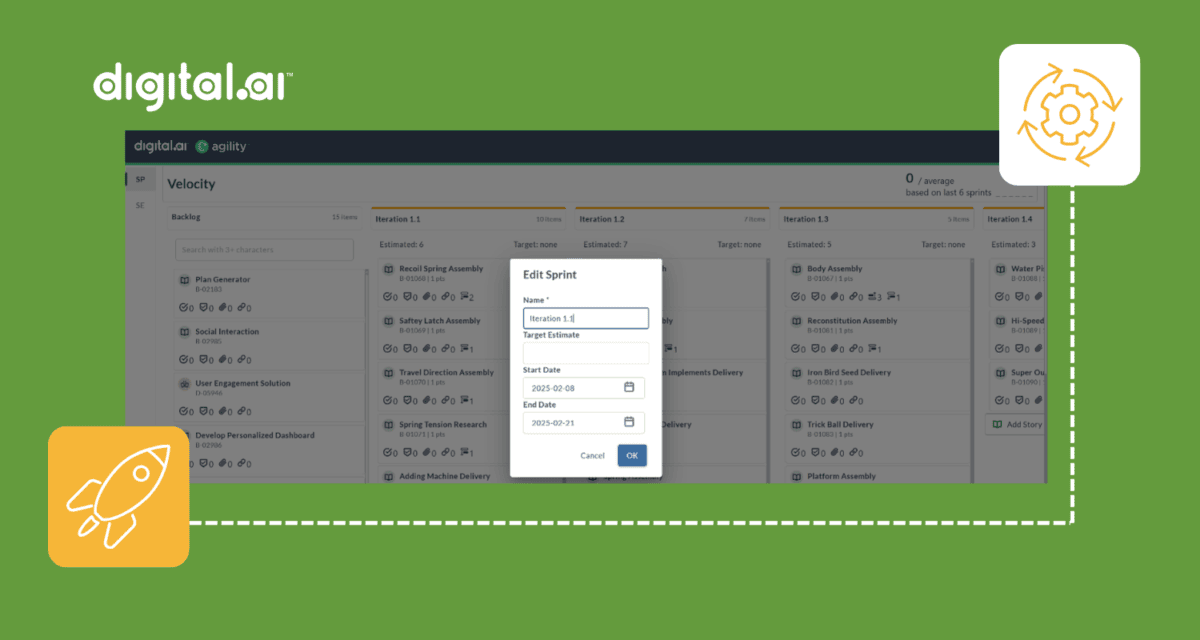Table of Contents
Related Blogs
The agile revolution completely transformed how we create digital products and services, but many of these advances have failed to benefit IT service organizations that ultimately support digital business functions.
The agile revolution completely transformed how we create digital products and services, but many of these advances have failed to benefit those that ultimately support digital business functions: IT service organizations.
IT service is often built around legacy frameworks, using “waterfall” management, rigid processes, and roles focused on specific tasks rather than individual talents. Focusing on assembly line-style processes causes long delays, multiple handoffs, and frequent misunderstandings in the typical IT infrastructure organization. IT leaders are so focused on creating stability that they often sacrifice speed within their organization and, ultimately, their business.
To transform IT service, leaders can turn to agile development practices and processes. The same agile benefits that development and operations teams experienced with the rise of DevOps can transform IT service. McKinsey found that agile approaches in IT service can boost service delivery and productivity by 25-30% in as quickly as six months, depending on the organization’s size.
Three effective ways to make IT services more agile in your organization are:
- Focus on the people and products you deliver instead of their roles and tasks.
- Prioritize continual service improvement (CSI) in your IT service organization, with iterative process revisions and data feedback.
- Let value drive every service decision, especially when setting and revising service level agreements (SLAs.)
Let’s take a look at how you can change your IT services using these tactics and enjoy their benefits as your DevOps colleagues already do.
Focus on people and product vs. roles and tasks
Typical IT talent is sourced and built around what role an individual fulfills within an organization. This person is usually expected to perform the same tasks the same way daily. The tools and technology they use to fulfill their duties become the overriding focus within this framework and don’t allow for much flexibility or change.
Yet, the Agile Manifesto emphasizes, “Individuals and interaction over processes and tools.” How can IT services better embody this agile principle?
Managers should fulfill business goals, not just facilitate structured tasks or processes.
IT service managers should be given the freedom to proactively identify problems using relevant metrics for their business, like the IT service delivery friction index. Let managers and teams work towards goals, like incident reduction, instead of only responding to problems once it arises.
Teams should be given the same freedoms and authority to choose how they work in this new paradigm.
Allow people to work collaboratively and form cross-discipline teams with authority to choose how they work towards a given goal. This team structure is vital for maintaining flexibility and agility while maximizing the contributions of each individual talent. Teams can choose to work on improvement initiatives that will optimize future performance or solve on-going problems that will reduce the emphasis on “firefighting” reactive activities.
Re-map and re-align IT services overall to focus on customer and business goals.
Moving away from stringent use of specific tools, technologies, or service tasks will liberate IT services to identify improvement opportunities across processes, workflows, and silos. Your business will create better products that meet customer needs and increase employee satisfaction.
As an added suggestion, IT leaders can create a new agile service manager role, which incorporates agile values and practices to the classic IT service manager role. These individuals are experts in business relationships and service-level management. They can guide IT service teams more optimally to meet the business requirements of internal and external customers.
As long as you focus on the people and your products, it will be intuitive to make the shift from role-focused jobs to jobs built around employees’ natural capabilities.
Make CSI nimble and iterative with analytics as a guide
The second part of shifting your IT services to a more agile-based approach is to add feedback and iteration to the equation.
Most IT service management (ITSM) teams do CSI, but it’s often tacked to the end of a project and lacks the accountability needed to make it a genuine priority. Not only that, but current CSI initiatives take six to 12 months to come to fruition, on average, which is too slow for service customers used to immediate feedback and response in today’s digital world.
Iterate first
The agile approach works well for IT services because it lets teams iterate and improve their products, processes, and teamwork immediately. The benefits of changes accumulate gradually and incrementally, so you’re delivering more value to customers — both visible and invisible — with each passing change
For example, sprints can be used to propose new process optimizations and to try out new technologies on a trial basis. Using data analytics, the outcomes of these sprints can be measured within both trial groups and organization-wide, once changes are implemented globally. Monitoring KPI fluctuations will help guide priorities and highlight opportunities for change.
Analyze second
To support your efforts, analytics tools and software apps can leverage data sourced from key systems of record already active within an IT organization. Many solutions offer informative dashboard configurations and visualizations that highlight IT service challenges, empowering a proactive approach to discovering and solving them before they can have a negative effect.
For example, SLA compliance visualizations can help IT leaders drill down into their IT service data to explore granular trends at any organization or workflow stage. Insight derived from this analysis can guide further decision-making.
Another use case for analytics can be NLP listening apps that monitor corporate social and chatter and cluster this information into relevant topics. Insights gleaned from this data can supplement existing customer satisfaction (CSAT) monitoring efforts and provide more insight into customer sentiment and survey comments, making it easier for IT service teams to create solutions to the pain points that most affect productivity.
Let value drive every decision
Delivering value should be at the heart of every decision your IT services team makes. Focusing solely on SLAs, roles, and tasks can lead to blind spots that affect your entire organization — and lead to unhappy customers and employees.
It’s time to revise your current ITSM framework to better represent how your IT service teams deliver value. That means taking a hard look at your entire IT organization to see where you can deliver that value faster and how you can adapt more readily to changing conditions. IT team satisfaction can also improve when teams have the autonomy to identify problems and solve them rather than perform the same tasks every day.
Shifting to a more value-driven approach and using agile perspectives, helps IT services become a more visible driver of organizational value. Teams will be able to proactively address problems rather than just responding to them, evolving IT into a dynamic organization that can handle whatever challenges may come.
Are you ready to scale your enterprise?
Explore
What's New In The World of Digital.ai
Digital.ai and Packaged Agile Partner to Help Enterprises and Agencies Reclaim the Value of Agile
Digital.ai and Packaged Agile: A Strategic Partnership That Reconnects Agile Delivery with Real Business & Mission Outcomes to be More Efficient & Effective
Plan, Execute, and Measure – All in One Environment: Digital.ai Agility 25.0 Feature Announcement
Discover what’s new in Digital.ai Agility 25.0 – updates to Rooms 2, OKR management, and more!
Better Together: Unlocking Endless Possibilities For Our Customers
This Valentine’s Day, join us in celebrating the unique stories that make our Digital.ai customers special!




